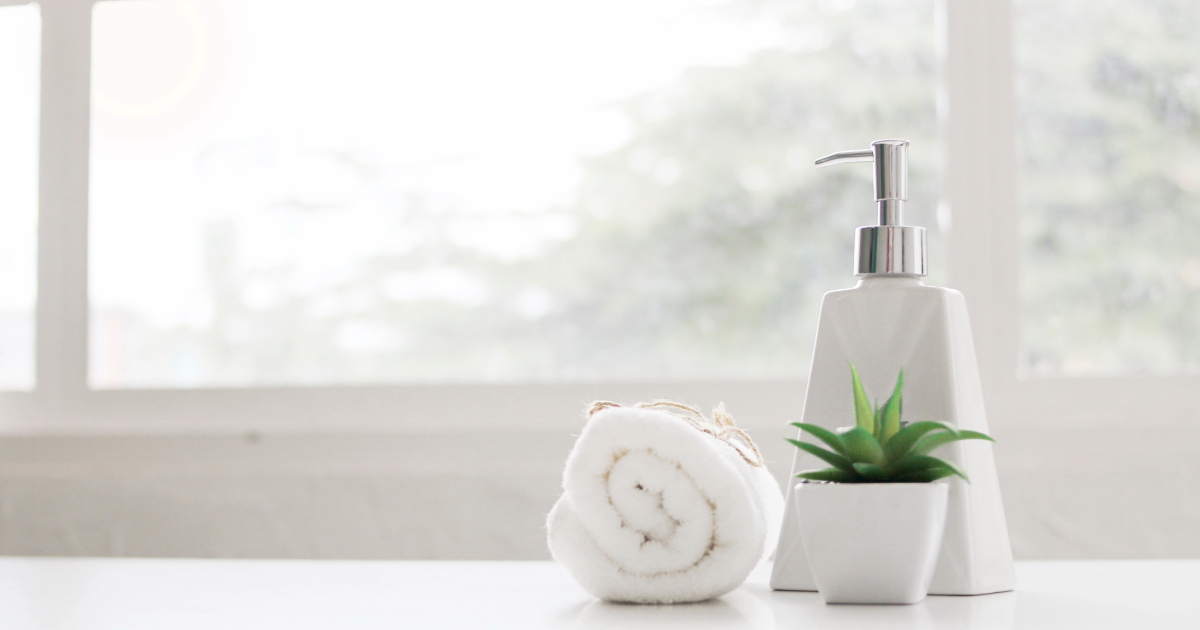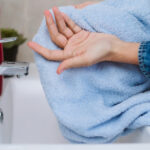A clay towel is a revolutionary product that makes car detailing easier and more effective. This microfiber towel has an embedded clay compound that lifts contaminants off your car’s paint to leave a perfectly smooth surface.

Clay towels provide major advantages over traditional clay bars. They are reusable, faster to use, and minimize the risk of paint damage. With the right technique, a high-quality clay towel can decontaminate your car’s exterior and prep it for waxing or sealing.
What Is a Clay Towel and How Does It Work?
A clay towel consists of a microfiber cloth with a thin layer of clay material bonded to the surface. The clay compound contains fine abrasives that lift away contaminants that are stuck to the clear coat.
Clay towels use the same mechanism as traditional clay bars to remove things like:
- Tree sap and tar
- Rail dust and brake dust
- Industrial fallout
- Overspray paint
- Bugs and bird droppings
- Oxidation
These contaminants embed themselves in the microscopic pores of the clear coat over time. Normal washing can’t displace the stubborn particles. That’s where the mechanical cleaning action of clay comes in.
The clay material’s natural tackiness causes it to “grab” the contaminants. As you rub the towel across the paint, it scrubs the particles off the surface and attaches them to itself. The abrasives in the clay then prevent the contaminants from re-bonding.
This process leaves you with an ultrasmooth finish that’s receptive to waxes, sealants, ceramic coats, and polishes. Contaminant-free paint also has much more vivid gloss and reflectivity.
Key Takeaway: Clay towels have an embedded clay compound that attaches to and removes bonded contaminants from paintwork.
When and Why You Should Use a Clay Towel
The main purpose of claying is to thoroughly decontaminate exterior paint and glass prior to detailing processes like:
- Waxing or sealing
- Ceramic coating
- Compounding and polishing
You should clay when:
- The paint feels rough or gritty
- Your car fails the plastic bag test (more on this later)
- Wax or sealant isn’t bonding properly
- Water doesn’t bead well on the paint
- You plan to polish or apply protection
Benefits of claying:
- Removes stuck-on contaminants other methods can’t
- Leaves a perfectly smooth finish for detailing
- Allows waxes, sealants, etc to bond optimally
- Restores glossiness and reflectivity
- Required prep for ceramic coatings
- Detoxifies paint from environmental damage
Claying is a necessary prep step 1-2 times per year to maintain a showroom finish. It’s also absolutely vital before polishing or ceramic coating.
Think of claying as deep cleaning for your paint. Just like you exfoliate your skin, you need to periodically exfoliate your car’s clear coat!
Key Takeaway: Claying removes bonded surface contaminants to prepare paint for polishing, waxing, sealing, and coating.
How to Prep Your Car for a Clay Towel
To avoid paint damage, you need to prep properly for claying:
Steps:
- Rinse the car thoroughly to remove loose dirt. Use a pressure washer if available.
- Wash with a pure soap – no waxes or gloss enhancers. This ensures bonding agents are stripped off.
- Decontaminate with iron remover if needed to eliminate fallout particles.
- Rinse again. Go over the car with a hose to wash away all soap.
- Dry the car fully. The clay towel must glide over a water-free surface. Use microfiber drying towels.
- Clay in the shade or indoors, away from direct sunlight. Heat damages clay lubricants.
The car must be completely free of grit and debris before claying. Any particles under the towel can scratch the paint. Careful washing and drying are crucial.
You should also use paint thickness gauges before claying. This lets you identify thin or vulnerable clear coat areas to avoid.
Key Takeaway: Proper prep is crucial – the car must be freshly washed, dried, and cool before claying.
How to Use a Clay Towel in 6 Simple Steps
With the right process, a clay towel is easy and safe to use. Here is the basic method:
Step 1 – Inspect and Prep the Towel
Inspect your clay towel for debris or damage before getting started. For a brand new towel, “break it in” by rubbing it on glass. This smooths down the clay material.
Also prep the towel by getting it wet with clean water or soap solution right before use.
Step 2 – Mist the Paint Section with Lubricant
Claying requires lubrication between the towel and paint. Quickly mist the section you plan to clay with:
- Clay lube spray
- Soapy wash solution
- Water-based detailer
Reapply frequently as you work! Insufficient lube is the main cause of marring.
Step 3 – Gently Glide the Towel Across the Section
With an even pressure, slide the towel across the paint using back-and-forth and up-and-down motions. Overlap passes to cover all areas.
Let the clay do the work – no need to rub aggressively. Keep the towel flat against the surface as you go.
Step 4 – Fold and Re-lube the Towel Periodically
To expose a clean area of clay and release embedded contaminants, regularly:
- Fold the towel to a fresh quadrant
- Mist fresh lubricant onto the clay material
- Rinse the towel if needed
Step 5 – Edge and Inspect as You Go
Use towel edges and corners to effectively clay tighter areas like mirrors and panel gaps.
Also feel with your hand and visually inspect as you clay. The paint should become perfectly smooth when contaminants are gone.
Step 6 – Remove Lube Residue and Dry
Finish by wiping off excess lube with a microfiber towel. Inspect closely and re-clay any areas that need more work.
Key Takeaway: Proper technique is key for maximizing cleaning power while minimizing swirls and scratches.
Pro Tips for Using a Clay Towel Like a Pro
With some practice, you can master the clay towel for immaculate paint decontamination. Keep these pointers in mind:
- Work in small 18 x 18 inch sections for systematic coverage
- Use the plastic bag test to identify areas needing claying
- Fold the towel frequently and re-lube the clay material
- If dropped, rinse off the towel before continuing
- Add an iron remover step for paints with heavy fallout
- Follow with polishing if you see any marring or defects
- Wash and fully dry the towel before storage
Take your time and don’t rush the process. It’s very satisfying to see and feel the super slick finish you’ll get from a complete claying session.
Key Takeaway: Follow these pro tips and techniques to get a flawless claying result.
Top Clay Towel Recommendations
Not all clay towels are created equal. Here are some top options:
- Chemical Guys – Clay Mitt (Thick clay coat, great cleaning power)
- Meguiar’s – Smooth Surface Clay Kit (Flagship brand, includes lubricant)
- Griot’s Garage – Surface Prep Mitt (Thick microfiber, 70+ uses)
- Adam’s Polishes – Clay Towel (Durable, reusable, fast cleaning)
- CarGuys – Clay Towel (Budget-friendly option, effortless contaminant removal)
- Nanoskin – AutoScrub Wash Mitt (Dual-sided microfiber & clay mitt)
- Rag Company – Ultra Clay Towel (Trusted detailing brand, smoothing clay material)
- Mothers – California Gold Clay Bar (Comes as towel & lubricant kit)
Focus on quality clay material, microfiber durability, ease of use, and value when choosing the right clay towel. Avoid cheap or thin towels that can mar easily.
With a good clay towel and proper technique, you’ll be amazed at the glass-smooth perfection you can achieve!
Key Takeaway: Choose a high-quality clay towel from a reputable auto detailing brand.
FAQs
How often should you clay a car?
Plan on claying about 1-2 times per year to keep paint contaminant-free. Or clay whenever the plastic bag test reveals roughness. Always clay before heavy polish or ceramic coating work.
How long does claying take?
For a full sized vehicle, expect claying to take 45-90 minutes. Use broader strokes and re-fold/lube the towel often to speed up the process.
Can claying damage the paint?
Claying incorrectly with insufficient lube or pressure can cause fine swirl marks known as marring. This is easily removed by polishing. Proper claying technique minimizes the risk.
Is claying required before waxing or sealing?
Strongly recommended but not absolutely required. Claying ensures maximum bonding and longevity from waxes, sealants, etc.
Can you use a clay towel on glass?
Yes! Clay is very effective at removing mineral deposits and contaminants from glass surfaces.
Conclusion
Clay towels provide an easy and safe way to get rid of stuck-on contaminants and prepare your paint for detailing. With the right technique, this game-changing product can give you a mirror-smooth finish before waxing or ceramic coating.
Focus on thorough prep washing, maintaining lots of lubrication, and taking your time. Be methodical in your approach. Properly done claying is deeply satisfying and well worth the effort!
Your paint will feel glassy slick and be free of embedded grime. Plus you’ll maximize the bonding and beading effects of protective sealants applied afterwards.







